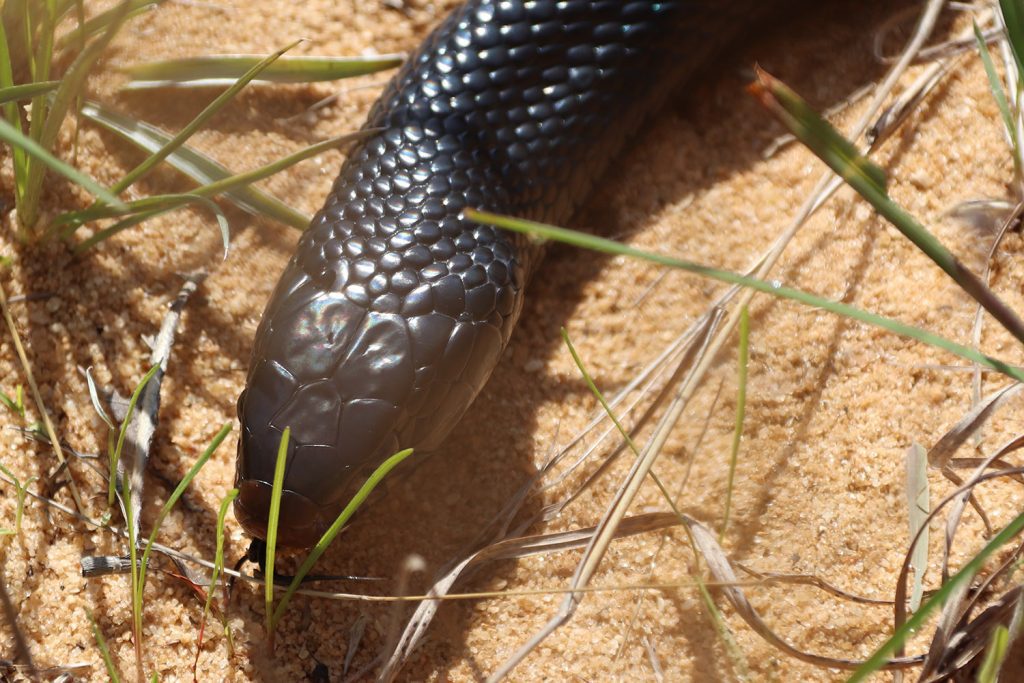The pillowcases are writhing. Everyone has been handed one, and some are moving more than others. Large scales show through the thin fabric, and in at least one pillowcase, a head is seeking a way out. It won’t have to wait too much longer. Today, we’re unleashing twenty six eastern indigo snakes onto The Nature Conservancy’s Apalachicola Bluffs and Ravines Preserve.
This is the largest release in the five years of the reintroduction program. It will also be the first year that many of the suitable gopher tortoise burrows here will have game cameras pointed at their openings. We split into three teams and seek out the marked burrows, and within moments of opening our bags, the shy, captive bred snakes slither into the safety of their shelter.
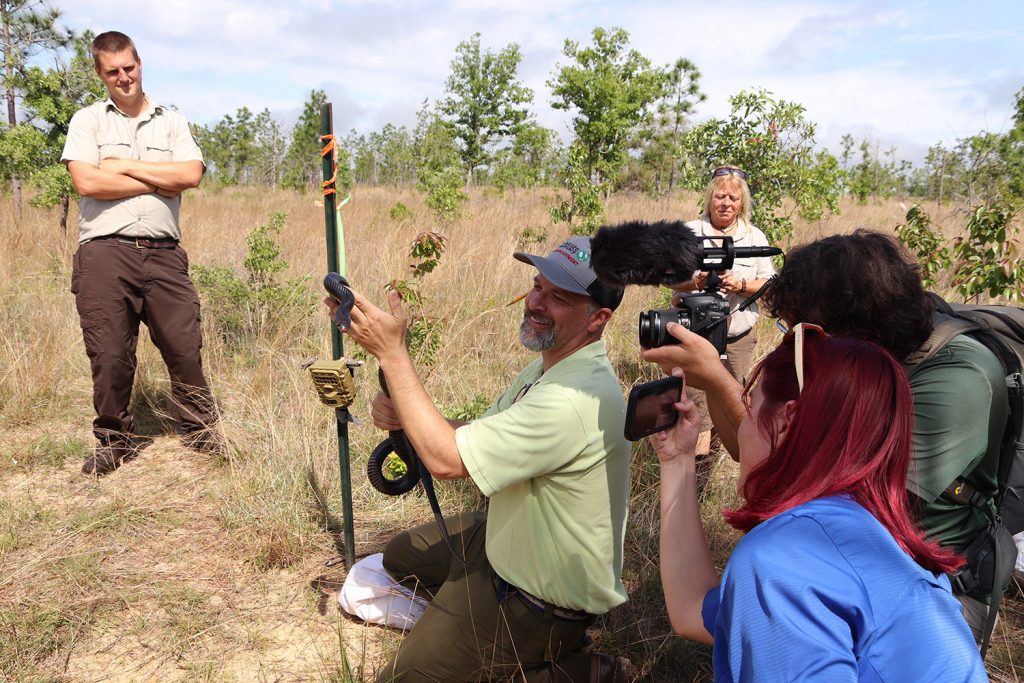
Before setting our snakes down, though, many of us pick them up to pose for photos. They neither struggle to get free or become aggressive. They are docile and tolerant of us humans. But we shouldn’t underestimate them for this. This is an apex predator. Indigo snakes eat eastern diamondback rattlers, copperheads, cottonmouths- all the snakes we’d regret accidentally stepping on in the forest.
As an apex predator, they have a critical role to play in this sandhill habitat. And yet, they had been missing, their role unfulfilled. Establishing them in the Apalachicola Bluffs and Ravines region is a further boost to decades of habitat restoration projects here.
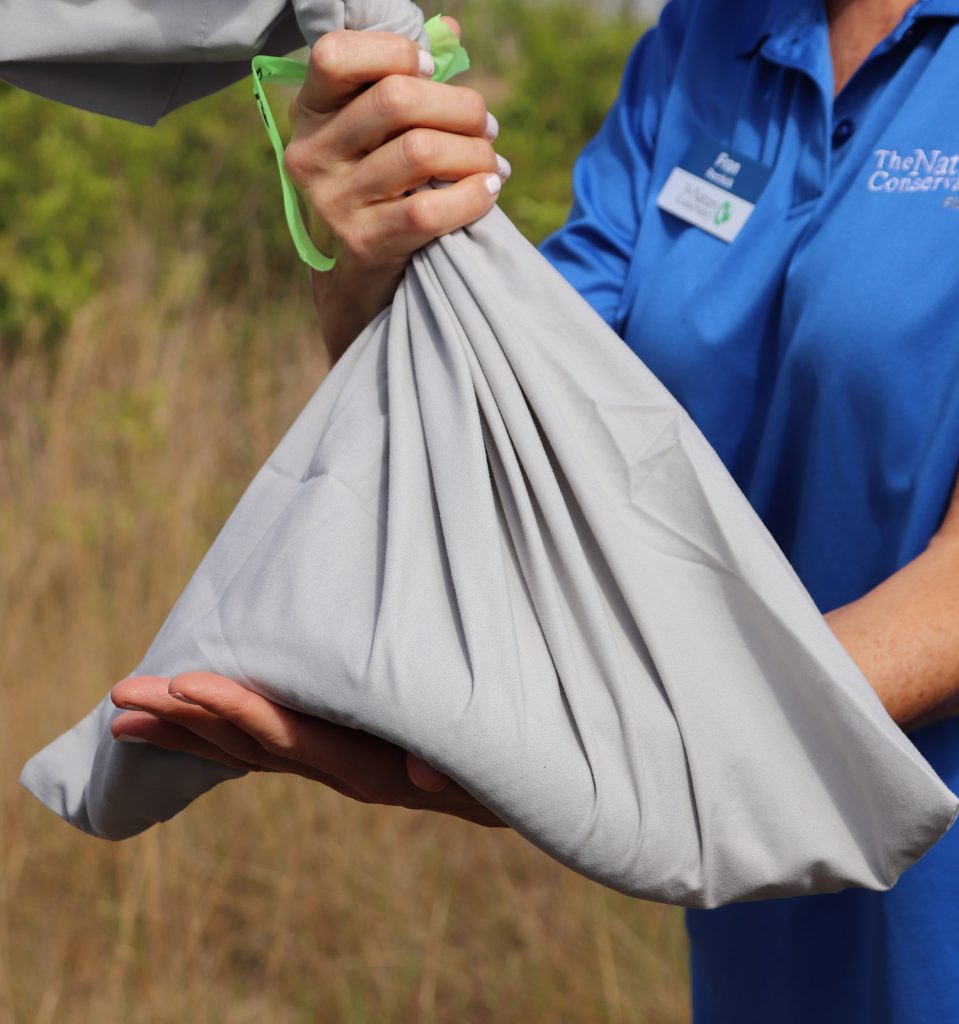
Bringing Back the Eastern Indigo Snake- a Team Effort
Before our teams head out, David Printiss says a few words. Printiss is The Nature Conservancy’s North Florida Program Manager, overseeing the Preserve. What we’re doing today is the fun part, but he doesn’t want anyone to forget how much work, by how many people, got them to this point. “Yes- man, it is super cool to releasing this on The Nature Conservancy property, but this is a very large undertaking with a whole lot of partners.”
The indigos are hatched at the Orianne Center for Indigo Conservation, which is operated by the Central Florida Zoo. Orianne also breeds some of the striped newts released by the Coastal Plains Institute.
The Nature Conservancy partners with state and federal agencies, such as the Florida Department of Environmental Protection, the Florida Wildlife Conservation Commission, the US Fish and Wildlife Service. “You know, we’re messing around with a listed species, right?” Printiss says. “We’ve got to do it right.”
The eastern indigo snake is Federally listed as Threatened, and is Endangered in Florida. As a listed species, it needs a rigorous management plan, which TNC and its partners collaborate to write and update.
The folks here today to release the snakes are with TNC or one of its partner organizations. They’ve put in the work, and for them, this is the happy payoff.
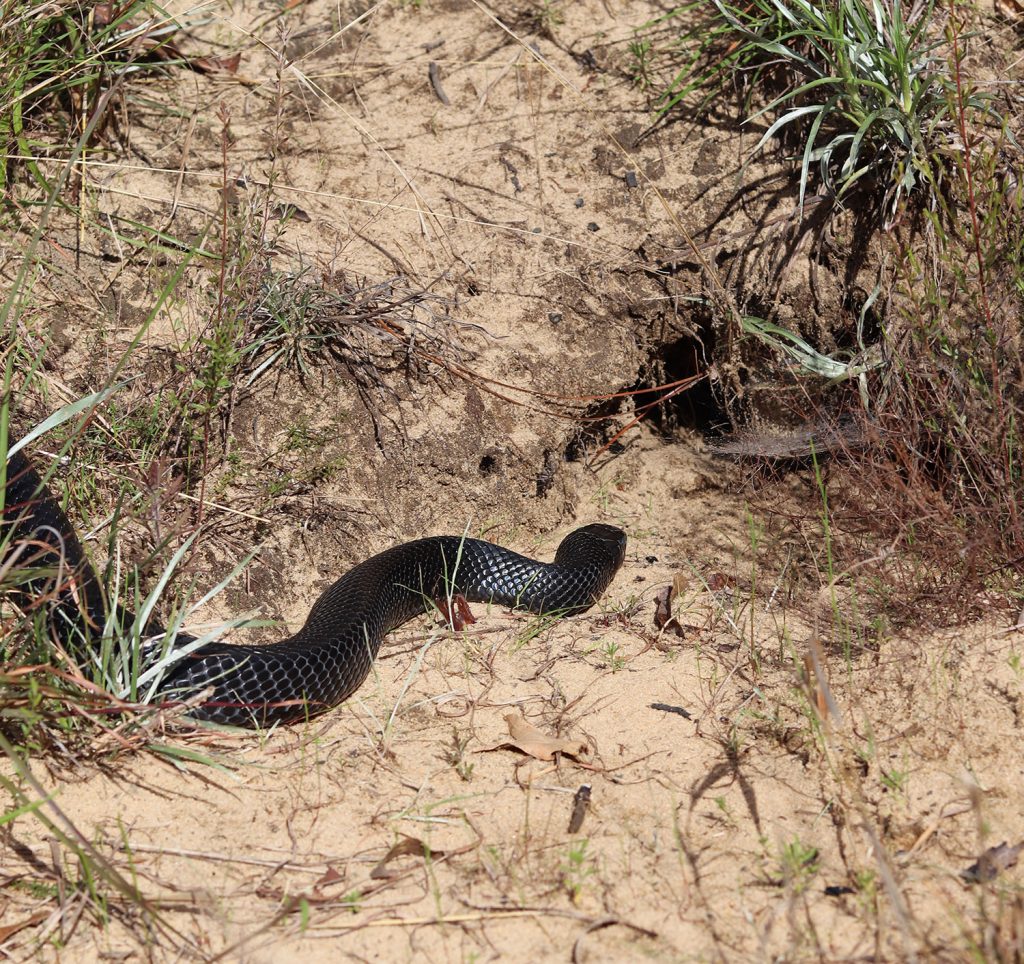
Getting used to the wild
Once the snakes enter the fire-dependent, longleaf pine based sandhill ecosystem, what then?
The idea is to build a self sustaining population here. In time, their numbers would hopefully grow from snakes breeding rather than from snakes being released. The indigo snakes released today are sexually mature, two year old adults. They join dozens of other snakes released over the last five years.
Pieces are in place, but there hasn’t been evidence of breeding yet.
“Finding a mate in a large landscape, especially being a zoo raised animal, you know, there’s a little bit of acclimation that the snake needs,” says The Nature Conservancy’s Chaz Oliver. He estimates it takes about three years for this to happen.
After that, conditions such as the availability of food and shelter affect whether animals might breed. “Like any population, you know, it ebbs and flows based off of available resources.”
With every passing year, TNC and its partners enlarge the pool of potential mates. Oliver says that they expect breeding to happen within the next couple of years. “That’ll be the final feather in the hat.”
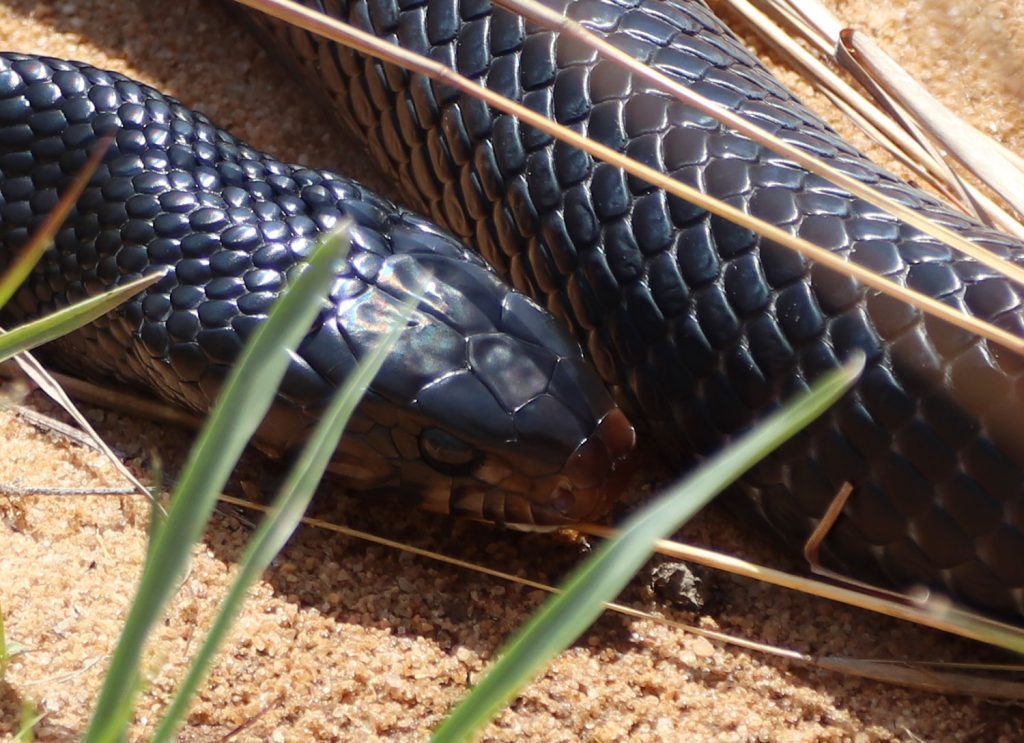
How will they know when indigo snakes have bred?
Every snake arrived in a pillowcase that had a numbered flag tied to it. Before passing them out, TNC crew checked the numbers on the flags against a chip embedded into each snake. “These snakes have PIT tags,” Oliver says, “which is Passive Integrated Transponders.”
Passive, as in it doesn’t transmit a signal. To identify a snake, you have to scan it with a chip reader. Today’s snakes were scanned before release, and will be scanned again every time they’re found. A couple of years ago I tagged along with David Printiss as his team looked for previously released indigo snakes. He caught and scanned one; knowing its identity, each of the volunteers remembered stories about the snake eating other snakes.
Over time, TNC tracks movement, mortality, and activity. One day, they’ll catch a snake with no chip to scan. This will be a snake born from released parents, likely in a gopher tortoise burrow.
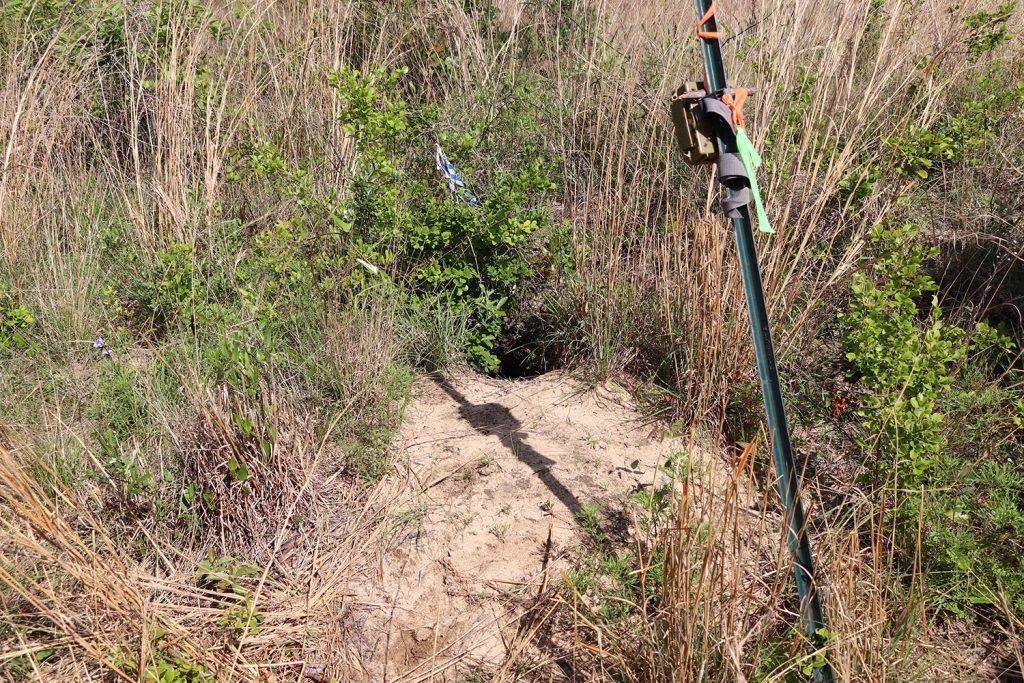
Game cameras
This year, TNC has added a new tool to help monitor indigo snakes- game cameras. I asked whether they were motion activated, and was told that the dark snakes don’t show up well enough. Also, gopher tortoise burrows tend to have grasses and other vegetation around the opening, which obscures the view.
Instead, each camera takes a photo every 30 seconds. That’s 2880 per camera, per day. It’ll add up to 1,051,200 photos per camera, per year. Right now, one dedicated volunteer is reviewing the photos. They are also exploring the use of artificial intelligence to sort photos.
Why the Apalachicola Bluffs and Ravines?
This is one of two eastern indigo release sites; the other is the Conecuh National Forest in Alabama. The site was selected because it is regularly maintained by fire, and has abundant gopher tortoises.
Fire and gopher tortoises go hand in hand. Says Chaz Oliver, “what fire does for the indigo is, yes, it maintains this nice herbaceous groundcover, in which then the gopher tortoise thrives.”
Regular fire keeps hardwoods to a small shrub size, and allows grasses, wildflowers, and succulent plants to thrive. Many of those plants have names like gopher apple or gopher grass because, you guessed it, this is what they eat.
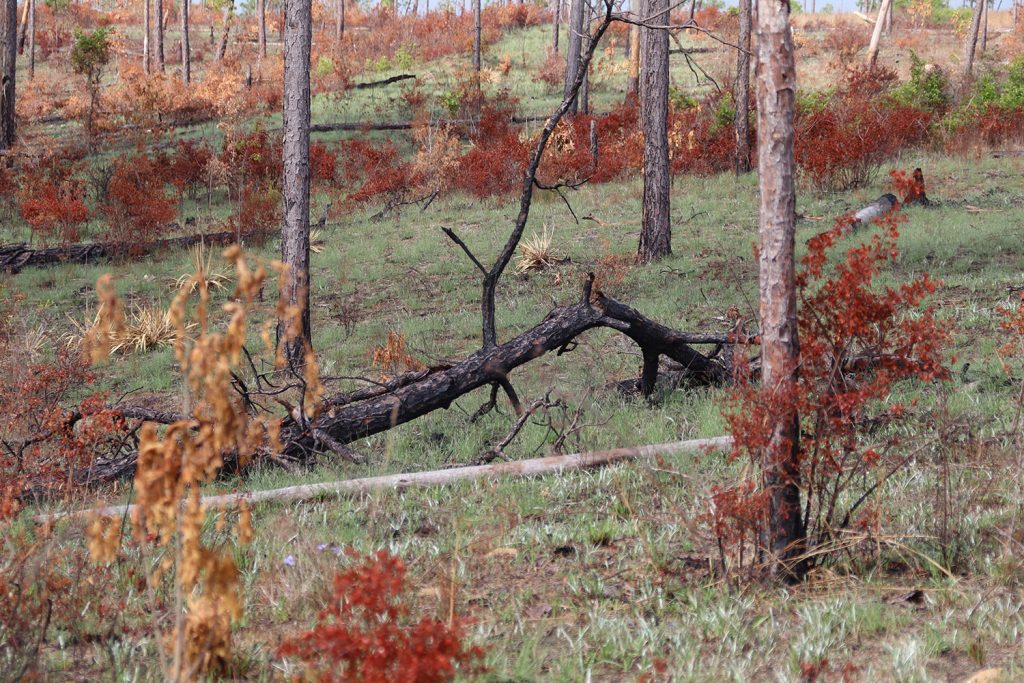
The deep sand hills here allow gopher tortoises to dig burrows well above the water table. Those burrows provide shelter for any of three hundred different animal species. It’s a handy place to hide from a predator, or from fire. And in the winter, it’s a critical shelter for a cold blooded reptile.
Without gopher tortoises, indigo snakes would have no place to stay warm for the winter- at least above Florida’s frost line. While gopher tortoises are listed as Threatened throughout Florida, indigo snakes are much more abundant in warmer south and central Florida than in the panhandle.
Here in the Apalachicola Bluffs and Ravines Preserve, indigo snakes have these burrows to hide out the winter, and then, starting in May, in which to make their nests.
There’s also room to expand.
For the last twenty or so years, The Nature Conservancy in Florida has been partnering with Torreya State Park on a restoration project. The park acquired a 6,000 acre tract of land, over 4,000 acres of which was sand pine plantation. They’ve been incrementally converting sections of that land back to a longleaf pine based sandhill habitat.
It takes a long time for longleaf pine to reach maturity, but TNC and Torreya have been establishing the ground cover – and fire – first. The Sweetwater Tract is adjacent to ABRP, so the robust gopher tortoise population at ABRP will hopefully start to expand into the newly cleared land. Indigos may then follow.
Another plus for both properties: each has steephead ravines. David Printiss has called steepheads “the supermarket.” Multiple snake species hunt down in ravines, where, in turn, they are hunted by indigos.
I first covered the Torreya sandhill restoration a couple of years ago. It’s the story that led me to indigo snakes. Just as I look forward to seeing the Sweetwater Tract habitat mature, I look forward to the day when The Nature Conservancy announces that they have captured a non-PIT tagged indigo snake.
We’re only really at the beginning of both stories- their combined story. It’s a story I’ll keep returning to as long as I’m covering ecology in north Florida.
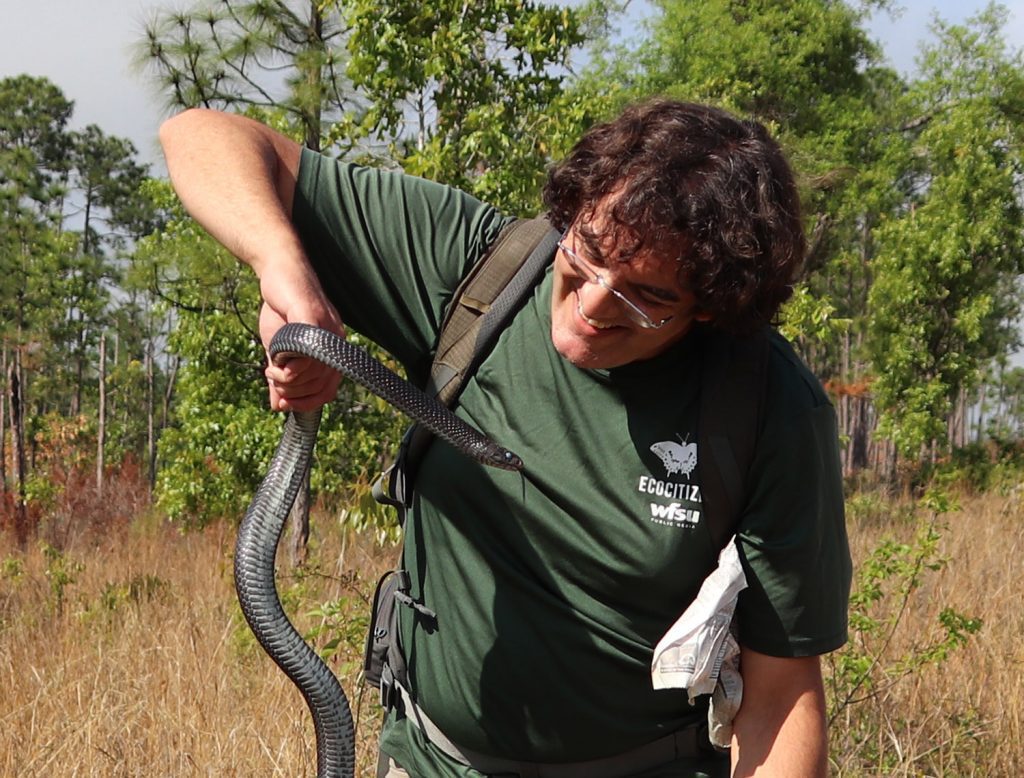
Lastly- Thanks!
When I arrived at the release site, I was asked a question that surprised me. Fran Perchick, my media contact at The Nature Conservancy, asked me if I had received my snake yet. My what?
I don’t know if it helps my story on indigo snakes to have held one in my hand. To feel those large scales. To hold it up and look into its eyes, and then place it down and watch it slither into a gopher tortoise burrow. I’d like to think it does, though I can’t put into words why. Either way, I appreciate being allowed to have the experience.
